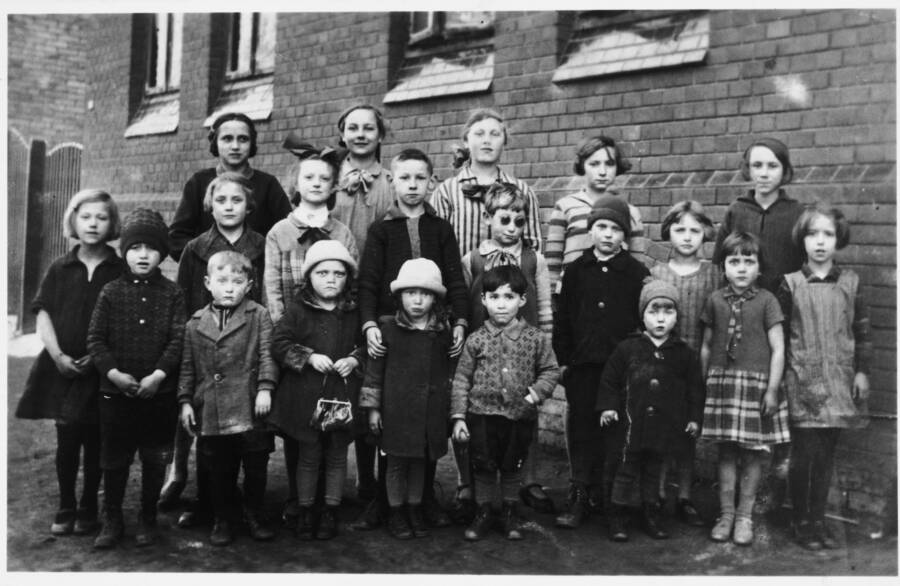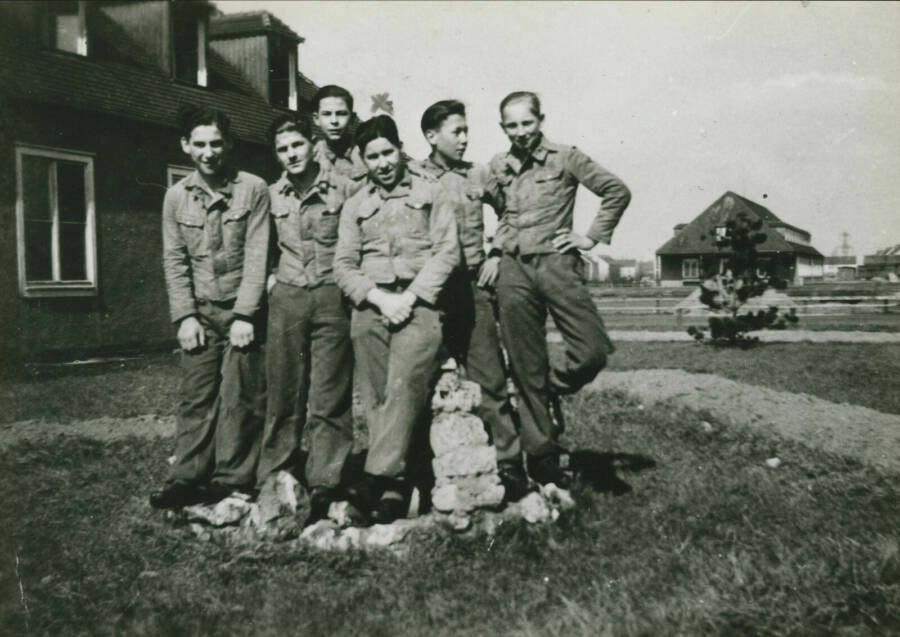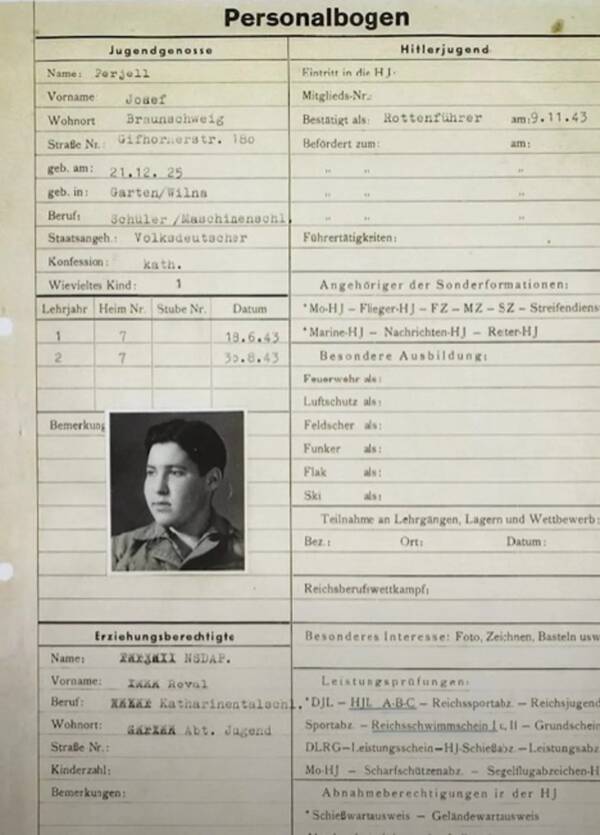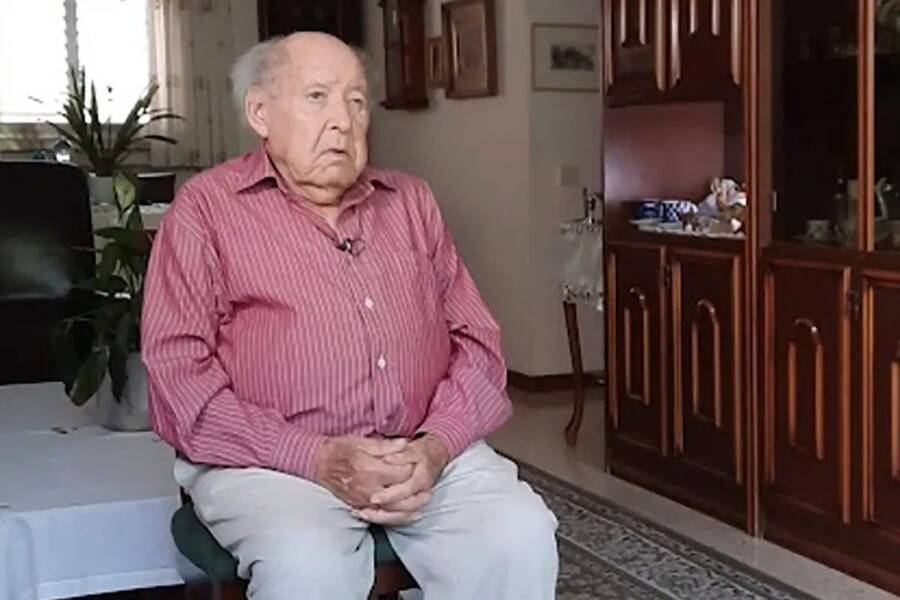Solomon Perel presented himself as Josef Perjell and even joined the Hitler Youth in order to avoid death at the hands of the Nazis during World War II.

Solomon Perel/U.S. Holocaust Memorial MuseumSolomon Perel in 1943, during his time with the Hitler Youth.
At the age of 16, Solomon Perel faced an impossible choice. Captured by a group of Nazi soldiers who demanded to know if he was a Jew, Perel decided to obey his mother’s advice — “to live” — and not his father’s, to “always remain a Jew.” He lied and told them: “I’m an ethnic German.”
Thus began Perel’s incredible journey, during which he’d transform into an enthusiastic Nazi named Josef Perjell and live with the Hitler Youth. Surrounded by Nazis for the better part of World War II, part of Perel went along with their ideology, while the other yearned for his family and former life.
He survived the war, and by the time he died in February 2023, Solomon Perel had written a memoir about his experiences, which was adapted into the 1990 film Europa Europa. He also spoke about the strange duality of his identities, noting that his soul was caught in a “tangle” between them. “I love [Josef],” he said in 1992, “because he saved my life.”
This is his story.
Solomon Perel’s Life Before The Holocaust
Born on April 21, 1925, Solomon Perel enjoyed an idyllic childhood in Germany. One of four siblings, Perel spoke Yiddish at home with his parents and German outside the home, according to the Washington Post.
But life for Perel and his family changed as Adolf Hitler rose to power in the 1930s. Before long, Perel felt the sting of antisemitism when he was expelled from school under new Nazi laws.

Solomon PerelSolomon Perel as a child (front row, center). He was nearly eight years old when Adolf Hitler took power in 1933.
“It was my most traumatic childhood experience,” Perel later recalled, according to The New York Times, “that barbaric expulsion from school because somebody considered me different.”
Determined to flee Hitler’s reach, the Perel family moved to Lodz, Poland in 1936, only for the Germans to invade three years later. They were forced into a ghetto, from which Perel and his brother Isaac managed to escape. Before they fled, Perel recalled that both his parents offered words of wisdom.
“Shlomoleh, don’t ever forget who you are. Always remain a Jew,” his father, Azriel, told him, according to Haaretz. But Perel’s mother, Rivka, urged her son to survive. “You have to live,” she said.
Shortly afterward, Solomon Perel and a number of other refugees were captured by German soldiers. When asked if he was Jewish, Perel denied it — and his life as an ethnic German Nazi began.
Living Among Nazis As Josef Perjell

Solomon PerelSolomon Perel, center, with other members of the Hitler Youth.
From that moment in 1941, Solomon Perel became Josef Perjell. He briefly worked as a translator for the unit that had captured him — and even participated in an interrogation of Joseph Stalin’s son Yakov Dzhugashvili — before his impressed superiors sent him to join the Hitler Youth.
Among boys his age, Perel wore a Nazi uniform, attended classes, and spent every second hoping that no one would discover his true identity.

“I was schizophrenic,” Perel later recalled. “During the day, I was a German youth who wanted to win the war, I sang songs against Jews and yelled ‘Heil Hitler’ — and at night, in bed, I cried out of longing for my family.”
Indeed, Perel never forgot his roots. During a Christmas break in 1943, he took a train to Lodz and wandered the city in search of his family. The New York Times reports that Perel saw carts loaded with Jewish corpses but was unable to find his parents and sister, who perished during the Holocaust.

Solomon PerelSolomon Perel’s Hitler Youth card, which lists his name as “Josef Perjell.”
As the war came to an end, Perel found himself hoping for a German victory — “I myself was amazed how deeply I, as a victim, identified with the persecutor,” he later said — but decided to revert to his former identity shortly after being captured by American forces.
With the war over and much of his family lost, Perel soon immigrated to Israel and started a new life for himself. He married, oversaw a zipper factory, and tried to leave his memories of the Holocaust in the past.
After suffering a heart attack in the 1980s, however, Solomon Perel decided to tell his story for the first time.
How Solomon Perel Told His Story

Yad Vashem Holocaust MemorialSolomon Perel later told the incredible story of how he’d survived the Holocaust as Josef Perjell.
Solomon Perel later noted that he long wondered whether he had “the right to compare [himself] with the survivors of the Holocaust and to place [his] memories on the same level as theirs.” But he decided to tell his story — and wrote a memoir which became the acclaimed film Europa Europa (1990).
In his memoir, Perel laid out the complexity of his survival. Josef Perjell, he explained, became an “organic part of the Nazi world” who “rejoiced at their victories.” His identity as a Jew was “forgotten.” It was only after the war that Josef stepped aside, and Solomon returned.
“To this day, I have a tangle of two souls in one body,” he told the Washington Post in 1992. “By this I mean to say that the road to Josef, the Hitler Youth that I was for four years, was very short and easy. But the way back to the Jew in me, Shlomo, or Solly, was much harder.”
He died on Feb. 2, 2023, in Givatayim, Israel, at the age of 97, having shared his story — and all its complexities — with the world. Indeed, his harrowing tale is the reason that Solomon Perel believes that he managed to live.
“I survived the war for a reason,” he said, “and that is to tell my story.”
After reading about Solomon Perel, look through these unsettling photos of everyday life in Nazi Germany. Or, see how a 96-year-old former concentration camp guard named Bruno Dey was found guilty of 5,230 counts of accessory to murder in one of Germany’s last Holocaust trials.





